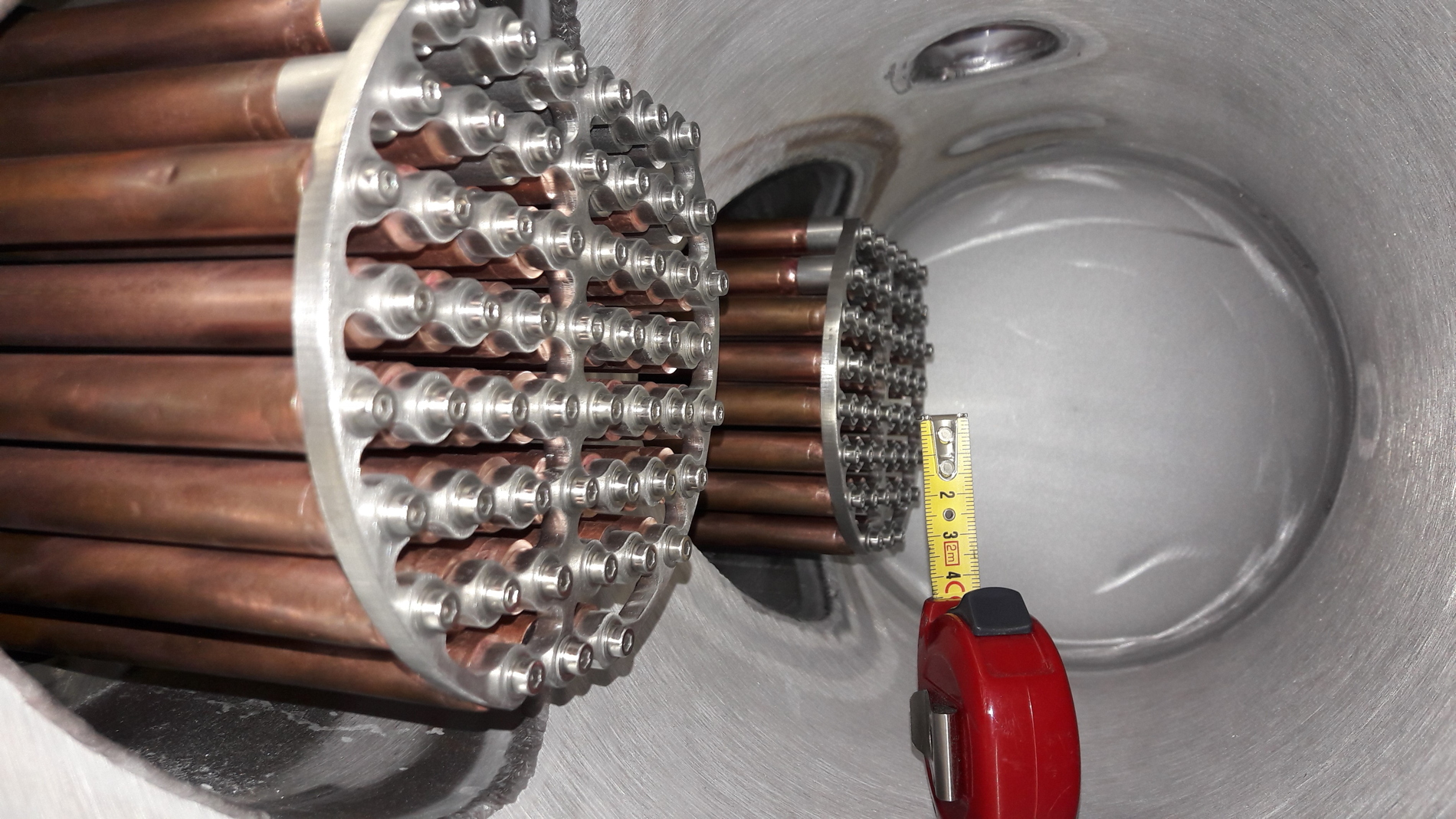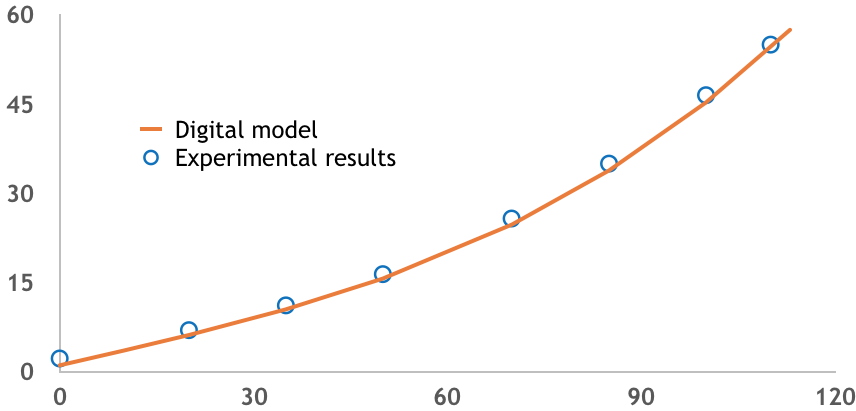CERN will increase the luminosity (number of collisions) of the beams of the large hadron circular collider (LHC) from 2025 onwards (High-Luminosity HL-LHC project) to study the Higgs boson more finely. IRIG's Department of Low Temperature Systems (D-SBT) is collaborating with CERN to design and test a compact Helium-Helium exchanger for cooling new superconducting magnets at 1.8K. Indeed, increasing the luminosity of the beams will only be possible with the modification of key components such as superconducting magnets positioned near particle detectors, which will have to produce higher magnetic fields. Replacing these magnets near the collision zones of the HL-LHC requires a review of their cooling system while respecting the available constrained space.
To carry out this work, the D-SBT relied on its recognized expertise in
superfluid helium (or
Hell) cooling. For nearly 45 years, the DSBT has been designing and supplying 1.8K cooling solutions for high field superconducting magnets (Tore Supra, LHC).
It is in this context that the DSBT proposed to cool the recombination magnet D2 (one of the magnets involved)
via a compact multi-tube exchanger (
Figure 1).

Figure1: Internal view of the prototype copper multi-tube heat exchanger inserted in the test cell.
To prevent film boiling in the Hell bath of the magnet to be cooled (which could be compared to the fuel rods of a nuclear power plant), this bath is pressurized. It is then cooled using a second saturated Hell bath, the equivalent of the secondary circuit of nuclear power plants. The heat exchanger made up of a bundle of copper tubes forms the interface between these two baths. To optimize the dimensions of this exchanger and respect the high integration constraints, the D-SBT researchers carried out the heat exchange modelling considering the specific properties of Hell and materials at low temperatures. In addition to these thermal calculations, they have selected electron beam welding of copper-stainless steel assemblies to ensure the reliability of the heat exchanger, which will have to operate at very low temperatures for more than 20 years. As soon as it was built, the prototype of this exchanger was equipped with a test cell simulating the magnet D2 to be cooled. It was then installed in the Multi-Test Cryostat of the 400W@1.8K Station of the D-SBT where cryogenic thermal performance measurements were performed and confirmed the initial simulations (
Figure 2).

Figure 2: Temperature difference on each side of the exchanger depending on the power to be extracted. Comparison at 1.8K between experimental measurements and initial simulations.
This first system is a successful technical achievement in terms of compactness and performance. Thus, at the end of these tests, the prototype exchanger designed by the D-SBT was qualified for the HL-LHC project. CERN now wishes to entrust the D-SBT with the optimization, then the industrialization and cold tests of series heat exchangers for their installation in superconducting magnets and then in the LHC tunnel by 2022.
A hadron is a composite particle, composed of subatomic particles governed by strong interactions. For example, protons or neutrons are hadrons.
Helium becomes superfluid or Hell, below 2.17K. It then has very different properties from a conventional fluid. Thus, HeII has a very high thermal conductivity, useful for efficiently cooling of superconducting magnets.